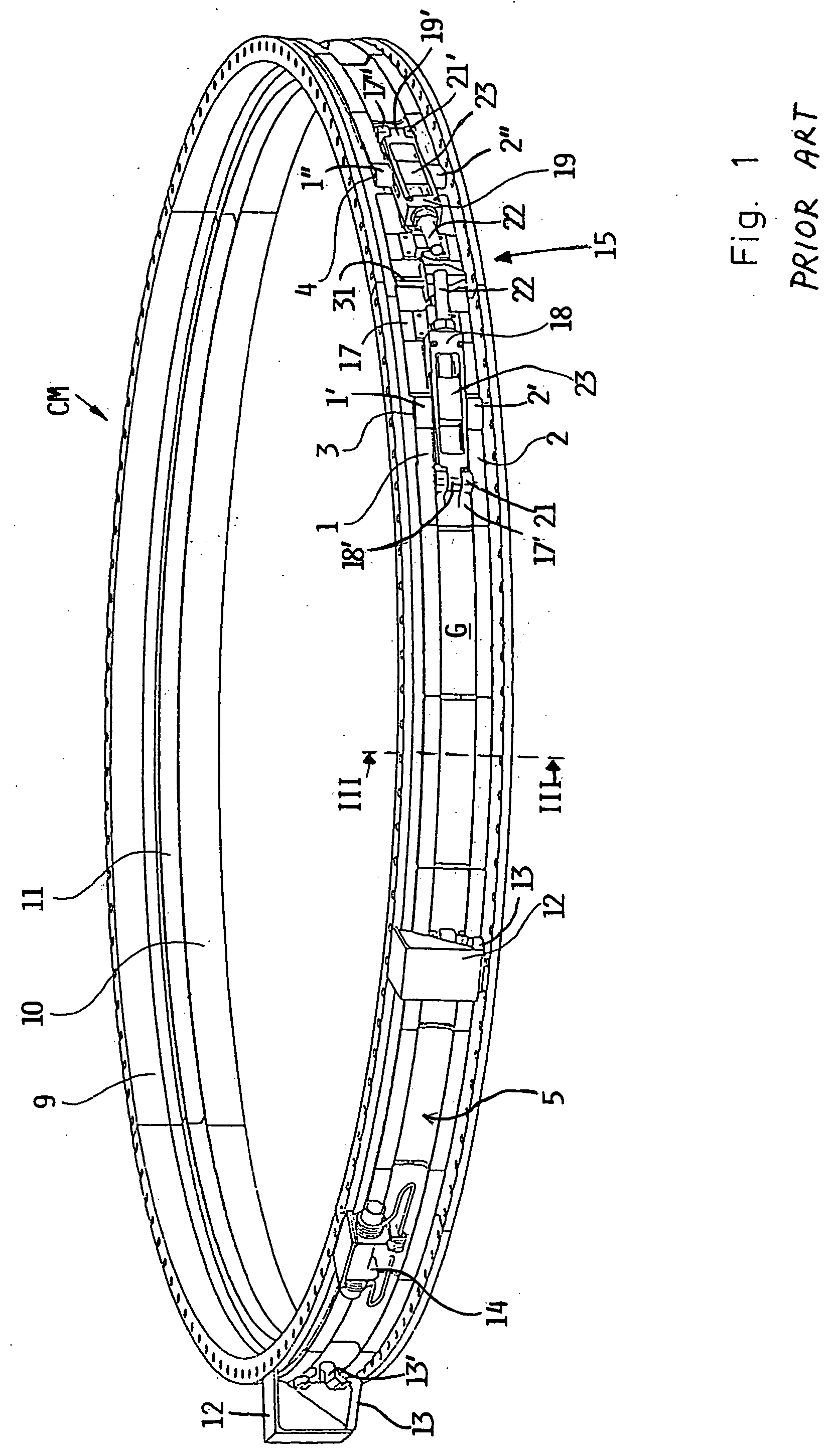Apparatus for releasably interconnecting structural components having a rotational symmetry
a technology of releasably interconnecting structural components and rotating symmetry, which is applied in the direction of rod connection, vehicle/pulley rope, building scaffolds, etc., can solve the problems of substantial dynamic load introduction into structural components and load imposed, and achieve the effect of optimizing the release function, reducing the triggering of undesirable loads, and preventing or greatly reducing the triggering of harmful vibrations
- Summary
- Abstract
- Description
- Claims
- Application Information
AI Technical Summary
Benefits of technology
Problems solved by technology
Method used
Image
Examples
Embodiment Construction
[0027] In order to provide a background context for the understanding of the invention, FIGS. 1, 2 and 3 of U.S. Pat. No. 6,588,968 B2 are now described first.
[0028] The perspective view of FIGS. 1, 2 and 3 shows a conventional clamping mechanism CM as disclosed in U.S. Pat. No. 6,588,968 B2 which describes a permanently closed ring that is formed of a plurality of clamping elements 5 circumferentially distributed around the ring shown in a tensioned and locked condition. The diameter of the permanently closed ring can be reduced for locking and increased for unlocking. The clamping elements 5 are held together by two tensioning members 1, 2 such as straps, tapes, belts or cables which are spaced from each other in the vertical or axial direction. The axial direction is defined as the central longitudinal axis of the structural components (not shown) to be releasably clamped together. The strap 1 has an eye 1' at one end and an eye 1" at the other strap end. The strap 2 has an eye 2...
PUM
 Login to View More
Login to View More Abstract
Description
Claims
Application Information
 Login to View More
Login to View More - R&D
- Intellectual Property
- Life Sciences
- Materials
- Tech Scout
- Unparalleled Data Quality
- Higher Quality Content
- 60% Fewer Hallucinations
Browse by: Latest US Patents, China's latest patents, Technical Efficacy Thesaurus, Application Domain, Technology Topic, Popular Technical Reports.
© 2025 PatSnap. All rights reserved.Legal|Privacy policy|Modern Slavery Act Transparency Statement|Sitemap|About US| Contact US: help@patsnap.com



